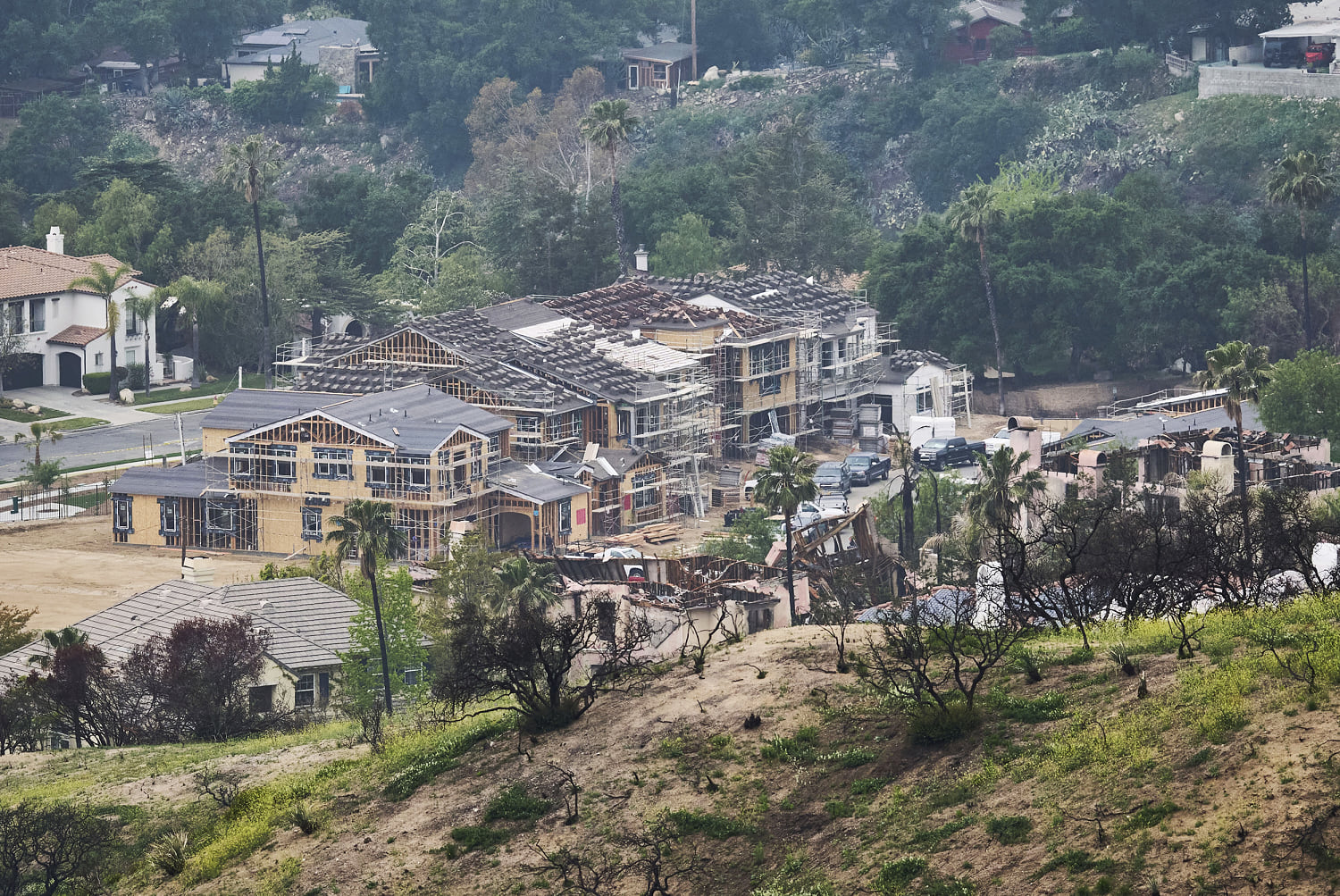
Much of the land was charred and barren after the fires, and the group also lost all of its cameras, watching as photos of the flames were transmitted before they went dark. But less than two months after the start of the fires, Ochoa was able to go back out and install new ones to start documenting the landscape’s recovery.
“The thing I really remember is coming here right after the fire — there was so much birdsong,” Ochoa said.
Many volunteers with the group are local residents who lost their homes and have told Ochoa that witnessing nature’s recovery in the area has brought hope to them as well.
While the fires burned aggressively, they also burned unevenly, leaving patches of trees and a small oasis of greenery surrounding a stream untouched. Animals were able to seek refuge there while the rest of their home burned.
They have not come across any deceased animals, she said, but there were reports of an injured bear and deer.
The heavy rain that came in the weeks after the fires have helped with a quick recovery.
On a recent Wednesday morning, Ochoa pointed out several charred San Gabriel oak trees — only found in Southern California — that had rampant green growth around their base.
The “crown sprouting” comes from having deep and developed root systems that have helped the trees survive for hundreds of years, Ochoa said.
An aggressive bloom of yellow mustard flowers, an invasive species, have also taken root on the hillsides, potentially crowding out native plants like the California sage brush and wild cucumber — a source of food for ground squirrels.
The group is partnering with local scientists at UCLA to do research on how bats and birds have fared after the fires as well.
As she installed a newly donated trail camera, she pointed out bobcat scat and fresh deer tracks on a ridge that had burned just months before.
Two red-tailed hawks circled each other in a mating ritual high above in the sky, a sign of spring.








